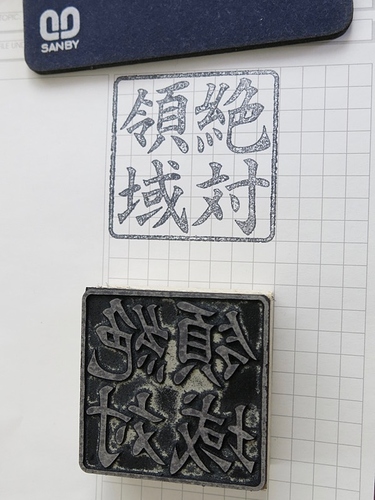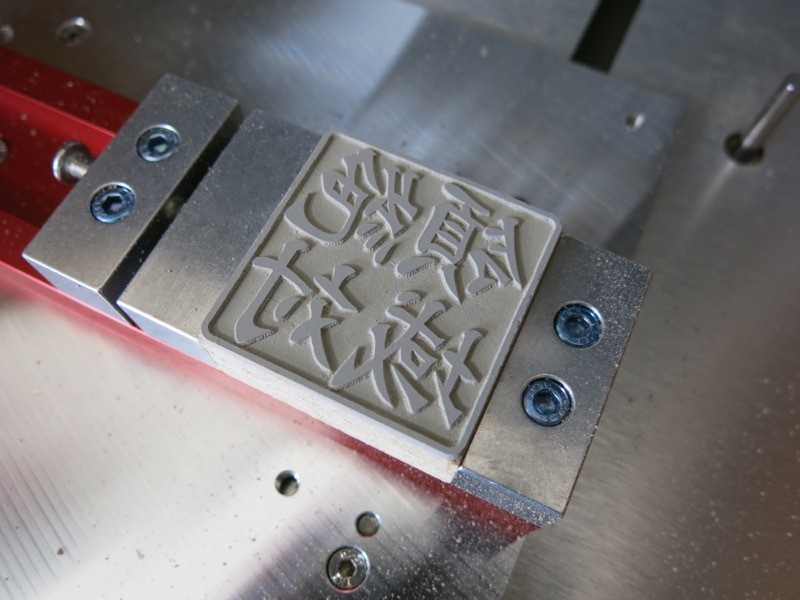One of the things I most wanted to do with CNC was carve seals for some martial-arts instructor friends. In the past I’ve helped them order name seals from web sites in Japan, and written a script to layout square seals in Illustrator to send to American rubber-stamp dealers.
This 2-inch seal was designed in Illustrator with my script, imported to VCarve Desktop 8.5, mirrored, and v-carved with a 20-degree v-bit, using the #102 endmill to clear the open space. It took about half an hour to run, with a lot of wasted time retracting the bit to the default 12mm clearance height. (lesson learned!)
Feeds and speeds were from the Carbide3D chart for linoleum (0.03" DoC, 3600 rpm, 75 ipm feed, 9 ipm plunge), for both bits, which worked great.
After deleting the original border from my script and recreating it in VCarve with a roundrect and the offset tool (because I didn’t like the thickness), I selected the inner border curve and the four kanji and set up a 1/16-inch v-carve toolpath with the v-bit, using the #102 for the clearing pass. Then I selected the outer border and told it to profile the outside edge to a depth of 1/8-inch.
This was a perfect job for the Nomad vise…
Here’s what it looked like after the clearance pass with the #102 bit:
The finished seal, cleaned off with a stiff-bristled brush:
There are still some lino crumbs, but they don’t affect the output. I think when I make them for instructors, I’ll just run the pocketing toolpath a second time to clean them out.
The 2x2 mounted lino block is from Bangor Cork, only $5.40 for a pack of 10. The v-bit is an EnPoint 20-degree carbide engraving v-bit, $20 for a pack of 5 on Amazon. The font is Hakushu Kaisho Bold, bought from imagenavi a few years back (no longer available there).
In Japan, the ubiquitous hanko-ya seal shops sell stamps made from end-grain hardwood (boxwood, maple, sandalwood, ebony, “axe-breaking birch”, etc), natural and synthetic horn, resin-impregnated wood, amber, fossil ivory, titanium, and assorted varieties of soft stone. Linoleum isn’t as cool, but it’ll tide them over until I acquire a good supply of soapstone blocks and set up effective dust control for the nasty stuff.
By the way, for those who don’t read Japanese, the carving on the stamp (絶対領域) isn’t particularly profound…
-j




